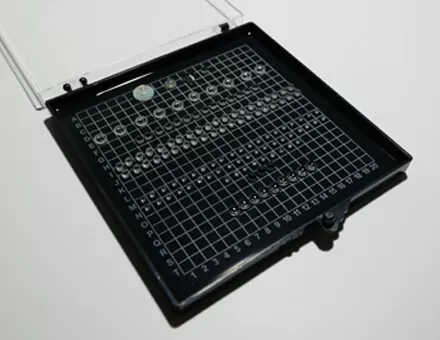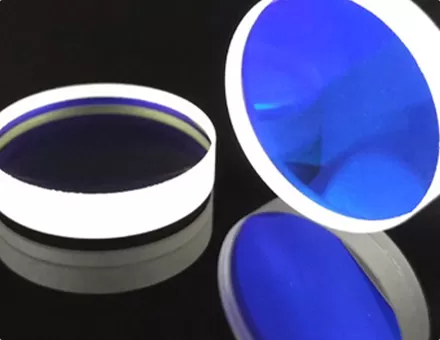1. What is a narrow band optical filter?
The so-called narrow band optical filter is subdivided from the bandpass filter. Its definition is the same as that of bandpass filter: this filter allows light signals to pass through in a specific band, while the two sides of the light signals that deviate from this band are blocked. The passband of the narrow band optical filter is relatively narrow, generally less than 5% of the central wavelength value.
2. Parameter description of narrow band optical filters
(1) Center wavelength
The central wavelength of the narrow band optical filter is generally the working wavelength of the instrument or equipment, which refers to the wavelength at the center of the passband. The specific definition of the central wavelength is as follows: corresponding to the wavelength positions on the left and right sides of the passband when the transmittance is half of the peak value, respectively.
In the actual production process, the position of the center wavelength of the narrow band optical filter is always a little different from the design value, so when specifying the center wavelength, a tolerance range is generally added. This tolerance range is determined by the actual usage conditions. Generally, the narrower the bandwidth, the smaller the tolerance. For example, for a bandwidth of about 10nm, the tolerance of the center wavelength is generally only allowed to ±2nm, and for a bandwidth above 30nm, it can be relaxed to ±5nm.
(2) Bandwidth
The bandwidth of a narrow band optical filter refers to the distance between two positions in the passband where the transmittance is half of the peak transmittance, which is sometimes called the half-height width (not called the half-bandwidth).
(3) Peak transmittance
Peak transmittance refers to the high transmittance of a bandpass filter in the passband. The requirements for peak transmittance vary depending on the application. In the requirements of noise suppression and signal size, if you pay more attention to the size of the signal, and hope to improve the strength of the signal, the narrow band optical filter needs a high peak transmittance. If you pay more attention to noise suppression, and hope to get a higher signal-to-noise ratio, then reduce the requirement on the peak transmittance and increase the requirement on cut-off depth.
(4) Cut-off range
The cut-off range refers to the wavelength range required to be cut off except for the passband. For narrow band optical filters, there is a front cutoff, that is, the cutoff wavelength is smaller than the center wavelength, and there is a long cutoff, that is, the cutoff wavelength is higher than the center wavelength.
The selection of the cut-off range is related to the light source used, the wavelength range of the interfering light and the spectral response range of the receiver used.
(5) Cut-off depth
The cut-off depth refers to the transmittance of the light that is allowed to pass through the cut-off band. Different application systems have different requirements for the cut-off depth. For example, when used in excitation fluorescence, the cut-off depth is generally required to be T < 0.001%. In ordinary monitoring and identification systems, the cut-off depth T < 0.5% is sometimes sufficient. The specific cut-off depth of the narrow band optical filter depends on the intensity of the light source, the size of the interference light and the demand for the signal-to-noise ratio.


















 EN
EN




